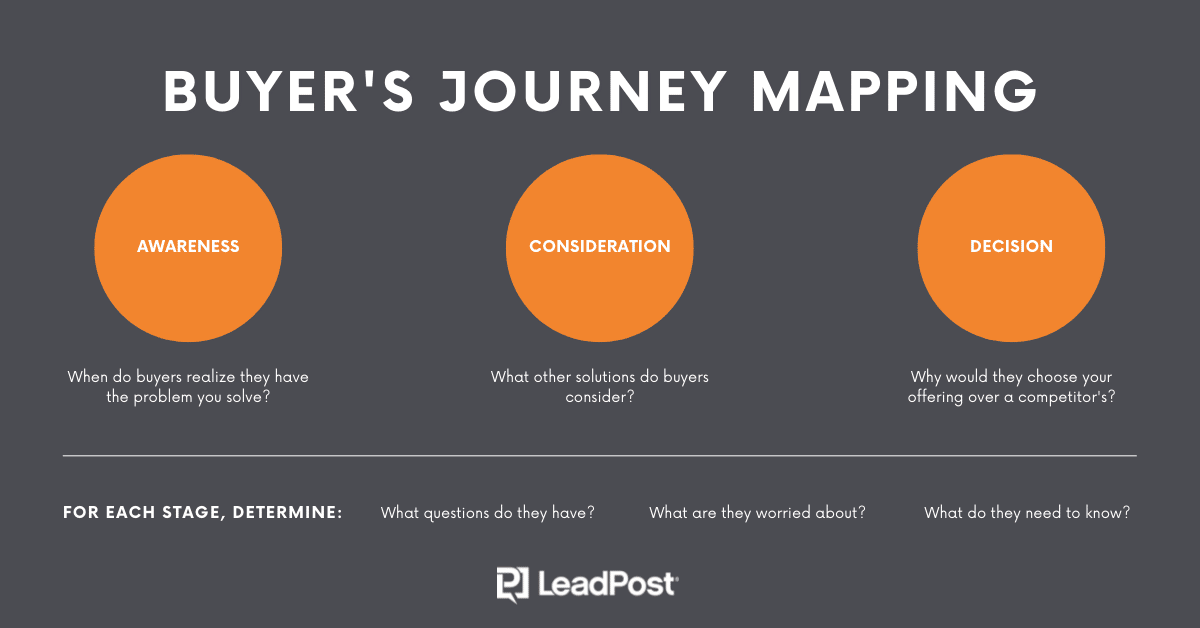Content marketing is a great way to generate more inbound leads. But it can be difficult to know what to write about. Keyword research can help, but the most important tool available to content marketers is the buyer’s journey.
What is the Buyer’s Journey?
The buyer’s journey is a framework that divides the purchase process into three stages: Awareness, Consideration, and Decision.
- Awareness. The Awareness stage is when the buyer first becomes aware of a problem. For example, a guy is invited to a wedding. He doesn’t have a tux. When he realizes he needs to figure out a way to get one, he’s in the Awareness stage.
- Consideration. The Consideration stage is when the buyer begins to consider their options. For a tux, your options are buy, borrow, or rent.
- Decision. Once the buyer decides on a solution (e.g., renting a tux), they’re in the Decision stage. Now, they’re considering different providers within that solution category.
How Does It Apply to Content Marketing?
Good content marketing should:
- Make people in your target market aware of your brand.
- Build your credibility by demonstrating your expertise.
- Create positive sentiment towards your brand by providing value to prospective customers.
The buyer’s journey helps you do these things by:
- writing content people in your target market are searching for,
- building your credibility by providing expert information, and
- educating prospective customers on an area of immediate concern.
When your content strategy is based on the buyer’s journey, you’ll be providing informative content that is relevant to the buyer at whichever stage of the journey they’re in.
How to Generate Content Marketing Topics
Once you understand the buyer’s journey, it’s pretty easy to generate ideas for blog topics and other content. First, you need to map out the purchase process.
Buyer’s Journey Mapping
Begin mapping the purchase process by determining what factors let you know that a person is in each stage.

- Awareness. When do they realize they have the problem you solve?
- Consideration. What other solutions do buyers consider?
- Decision. Why would they choose your offering over a competitor’s?
Then, for each stage, make a list of:
- questions buyers might have,
- concerns buyers might have, and
- things buyers need to know (e.g., consequences of inaction).
Topic Selection
Once you complete those lists, start researching competing content for relevant keywords. At first, you’ll want to find the sweet spot between competition and search volume. Generally, the terms with the most volume will be the most competitive.
You’ll want to create content for those terms, but less competitive terms are usually the better place to start.
And just because a keyword research tool says a keyword doesn’t get any traffic doesn’t mean you shouldn’t write content for it. First of all, those tools can be inaccurate. Second, those topics are still important to your target market. They might not find it through organic search, but there are other ways you can get it in front of them.
Focus on the Buyer to Improve Your Content Strategy
The key to creating content that converts is to focus on the buyer. By mapping out the purchase process and developing content that speaks to your target market’s needs, you’ll never run out of good blog ideas.
